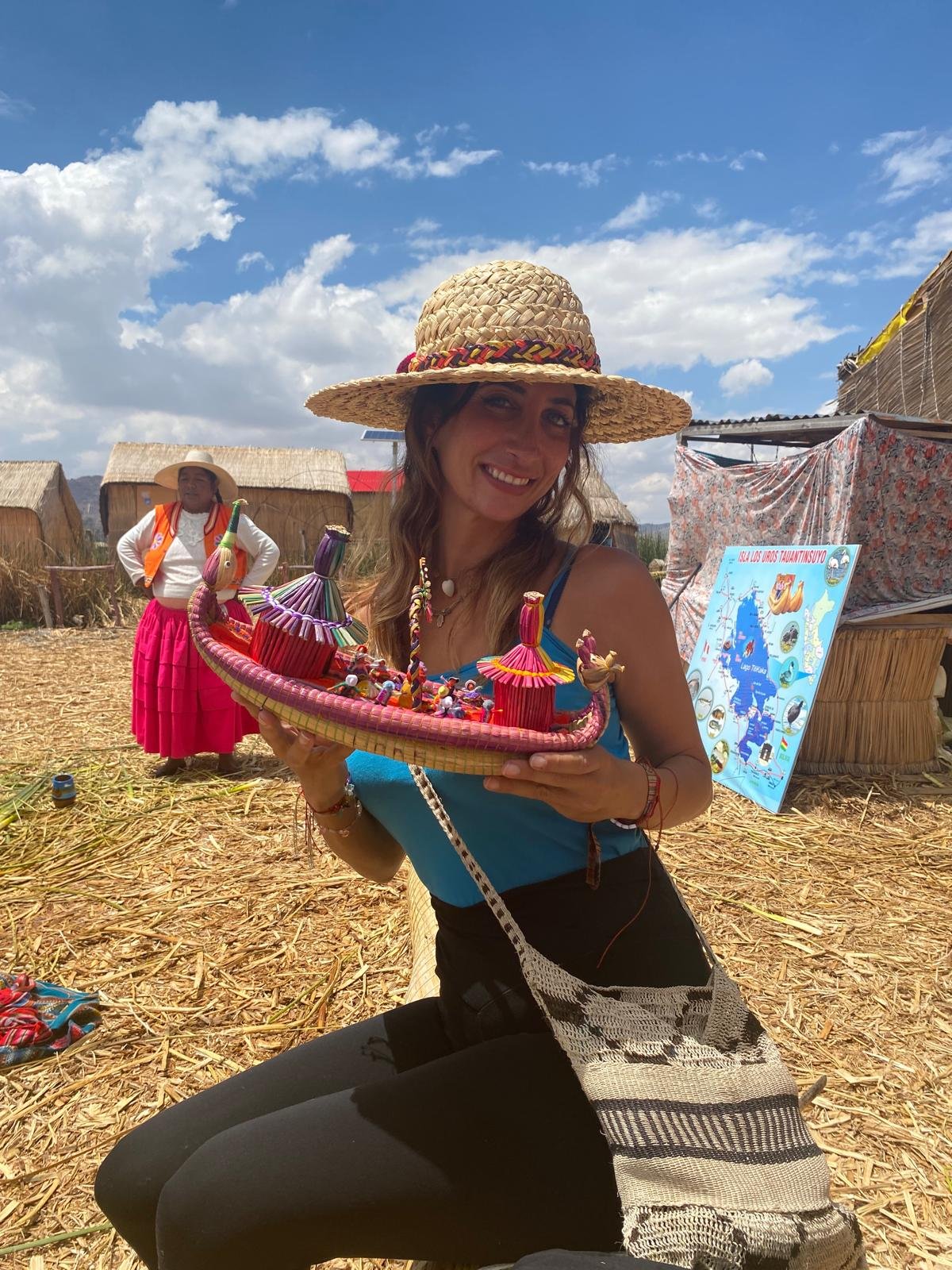Uros Floating Islands, Lake Titicaca, and Puno, Peru.
Throne of Carnival, in Lake Titicaca, Puno, Peru.
Crossing the border from Bolivia to Peru in the area of Lake Titicaca, is the way we proceeded on our trip. Once we arrived at Puno, which is the city in southern eastern Peru, located on the shore of Lake Titicaca, we were under the Peruvian side.
Puno, the city on the shore of Lake Titicaca in Peru.
Puno, the city, is the gateway to visit Uros Floating Islands. Puno is an important agriculture and livestock region in Peru. The lickstocks are llamas and alpacas. We enjoyed visiting Puno as the city has an amazing market which includes a lot of goods arriving from Bolivia. The market in Peru includes traditional food, ceviche, and lots of fruits. We bought good sweaters made from real alpaca wool and traditional jewelry.
Local Bolivian and Peruvian indigenous in the market of Puno, Peru.
Colorful market fruits and vegetables in Puno, Peru.
Typical fish in the market of Puno, Peru.
Puno enjoys a very rich community life. We have witnessed days of celebration. During the celebration there are regional competitions of autonomous dances. Each day, the dancer group had different clothing with a different color team. It was amazing to watch this fiesta carnival and the unity of the local communities.
Carnival in the street of Puno, Peru.
Indigenous traditional carnival in the street of Puno, Peru.
Indigenous traditional carnival in the street of Puno, Peru.
From Puno, you have access to Lake Titicaca, which is surrounded by 41 floating islands. The Uros is the man-made island that is a large tourist destination. In Uros, the island is populated by the indigenous people of Bolivia mainly and Peru. The main 3 groups are Uro Cipiaya, Uro Morato and Uro Iruito.
Uros Floating Islands in Lake Titicaca, Peru.
Noy enjoying the hospitality of the Uros indigenous village.
Typical picture of the Uros indigenous village with the community floating boat in Lake Titicaca, Peru.
We are dedicated to visit the Uros Islands and to enjoy the hospitality of the local indigenous. We arrived at Uros island by boat and we met with a family who entertained us for a few hours by introducing their culture, dancing and showing us their traditional way of living.
Traditional indigenous craft in Uros village in Lake Titicaca, Peru.
Traditional indigenous craft in Uros village in Lake Titicaca, Peru.
Riding on the boat inside Uros Floating village in Lake Titicaca, Peru.
We visited their local gathering facility, and their artesanal production of jewelry and clothing. The Uros constantly construct the basics of the land over the water with harvesting totora. They believe that the totora reed can be wrapped around the body for pain relief. The same like the indigenous in Bolivia using the coca leaf.
Indigenous Bolivians and Peruvians in the Uros Floating Islands in Lake Titicaca, Peru.
Boat ride in the Uros Floating Village in Lake Titicaca, Peru.
Their main dish is fishing in the lake and preparing dishes such as ceviche and trout. The Uros women are proud to show their craft and knitting while the men show other artesanal work.
Boat ride in the Uros Floating Village in Lake Titicaca, Peru.
Boat ride in the Uros Floating Village in Lake Titicaca, Peru.
We concluded the visit by having a boat ride made by totora reeds. We enjoyed our trip to the Uros Floating Islands and the city of Puno in Peru.
Boat ride in the Uros Floating Village in Lake Titicaca, Peru.
In the evening, upon returning from the visit of Uros Floating Island at the port of Puno, there was a community gathering by the local indigenous. It is amazing to experience the ancient way of gathering for the indigenous of this region and to participate in the way they conduct their traditional trading with each other. I took pictures to memorise these events and I share these pictures in this blog with you.
Thank you for reading our blog.
Local indigenous community gathering in the port of Puno, Peru.
Local indigenous leader in the community gathering in the port of Puno, Peru.





















